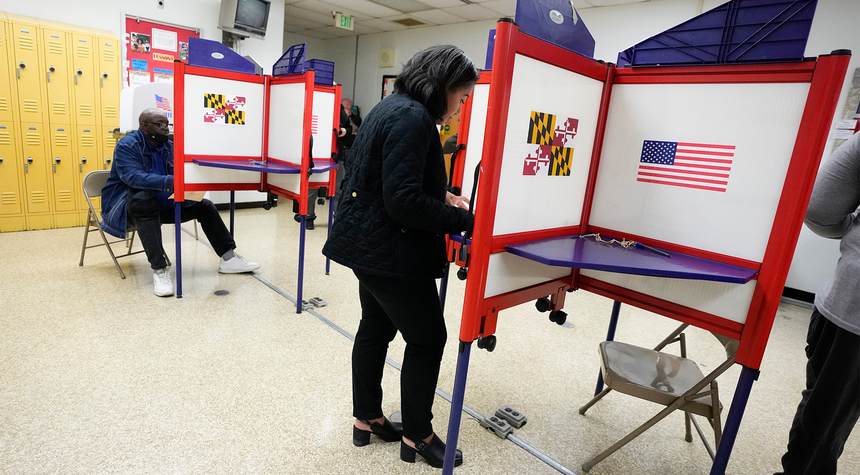Democrats Might Be Underestimating How Badly They Will Get Trounced on Tuesday

This morning Real Clear Politics (RCP) made its election predictions three days out. RCP averages specific polls with a history of accuracy and produces the RCP average for each race and the generic ballot. Theoretically, averaging historically accurate polls will remove any remaining bias and come closer to predicting the outcome. However, in 2016 and 2020, most polls overestimated the performance of Democrats. Thus, even the RCP average of polls has underestimated Republican performance in recent years.
Commentators advance many theories for the deterioration of election poll accuracy. Some believe pollsters are trying to help construct a narrative that discourages Republicans from voting. Others think conservatives are less likely to answer election surveys. Pranksters on the right even admit to providing wrong answers on purpose, depending on the pollster.
So this year, RCP added a column for the average amount polls underestimated Republicans over the past few elections and then a column for adjusted poll averages. The last column is the site’s predictions for the Senate and governor races. RCP now predicts the Senate will have a 54-seat Republican majority after a runoff in Georgia in December. It also forecasts the GOP will net three governorships, leaving 19 Democrat-led states and 33 Republican-led ones.


But is it possible that RCP’s adjustment may not be enough? A new poll indicates that is a distinct possibility. The Trafalgar Group conducted a poll for Convention of States utilizing a method that lead pollster Robert Cahaly developed in 2016. Cahaly asks respondents what their neighbors think or who they will vote for as a proxy for what the person on the line will do. Using this method, Trafalgar was the only pollster who predicted President Trump would win Michigan and Pennsylvania in 2016.
Related: Bracing for Huge Losses, NY Democrats Get Ready to Blame the Black Guy
With the Democrats withering harangues about threats to “our democracy” and the complete media freak out about what the polls are already saying, the new data from Trafalgar should have both groups furiously searching for their Xanax and bourbon. “Our pollster Robert Cahaly is famous for having devised a method to ask voters what they themselves think by asking what their neighbors think, and we wanted to apply that principle to understanding how voters feel in the current climate,” explained Mark Meckler, President of the Convention of States.
By a significant margin, unaffiliated voters think their friends and neighbors are afraid to express their views about who they will vote for on Tuesday. Only 38.6% of Democrats believe this, while a slight majority of Republicans, 51.4%, do. However, almost two-thirds, 66.3%, of unaffiliated voters do. Unaffiliated voters are the only group seen as persuadable in most elections. It’s easy to see how the legacy media narrative about political violence from Republicans could make unaffiliated voters hesitant to say they will vote for them.
Recent disclosures about social media monitoring by Big Tech in cooperation with the government probably increased the unwillingness of people to speak about the election publicly. Add that to Attorney General Marrick Garland using the DOJ and FBI as political weapons against Republicans and conservatives, and it makes sense that people would not want to identify themselves as voting for one. It also makes sense that more Republicans than Democrats feel this way.
A significant majority — 60.1% — of unaffiliated voters also believe their “neighbors” are voting for Republicans. “Interestingly, that’s about the same number [of unaffiliated voters] who are afraid to say who they’ll vote for,” noted Meckler. “This indicates that the theory of the ‘submerged voter’–voters so concerned about people finding out who they voted for that pollsters cannot detect them–will come into play in this midterm in a major way.”
Submerged voters materialized in Michigan and Pennsylvania in 2016. These are two states with critical races again this cycle. Margins for Democrats are also thinner than expected in high-profile races in Washington, New Hampshire, Minnesota, and Wisconsin. In addition, House districts President Biden won by over 10 points two years ago are now considered toss-ups.
Will the shy voter topple Democrats even where the current polling has them winning? Only time will tell.
No comments:
Post a Comment